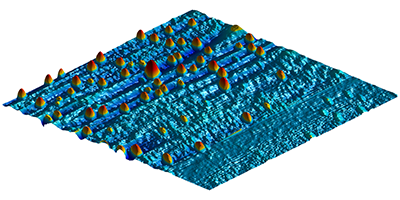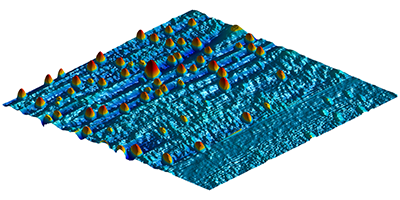Can’t Burst This Bubble
How long an air bubble lives in water depends critically on its size. Because of surface tension, the smaller the radius of curvature of the bubble, the easier it is for the bubble to leak gas and collapse. Bubbles smaller than nanometers in diameter should last less than a few microseconds. However, recent observations show that on a solid surface covered by water, nanobubbles can live as much as ten orders of magnitude longer than free bubbles (up to days). No satisfactory explanation for this property has been found, but now, writing in Physical Review Letters, Joost H. Weijs and Detlef Lohse at the University of Twente in the Netherlands claim to have solved this riddle.
The authors’ theory is based on conventional diffusion physics but accounts for the specificity of the surface bubble geometry. Two effects play a major role in the model. First, as the bubbles leak gas, they stick to the same area on the surface and get thinner and flatter. The radius of curvature thus increases, making them more stable. Second, a sort of “traffic jam” effect occurs: Since the liquid is typically saturated with gas, an individual bubble can only leak its gas into the liquid if a corresponding amount of gas is released into the atmosphere. This dramatically reduces the speed at which the gas can leave the bubble.
The theory yields lifetimes consistent with previous observations. Should it be validated by further experimental tests, the model may assist a vast array of applications. These range from the transport of anticancer drugs across biological membranes to friction-reduction in nanofluidic devices, where nanobubble coatings could be deposited on the surface of nanochannels to facilitate the passage of fluids. – Matteo Rini





